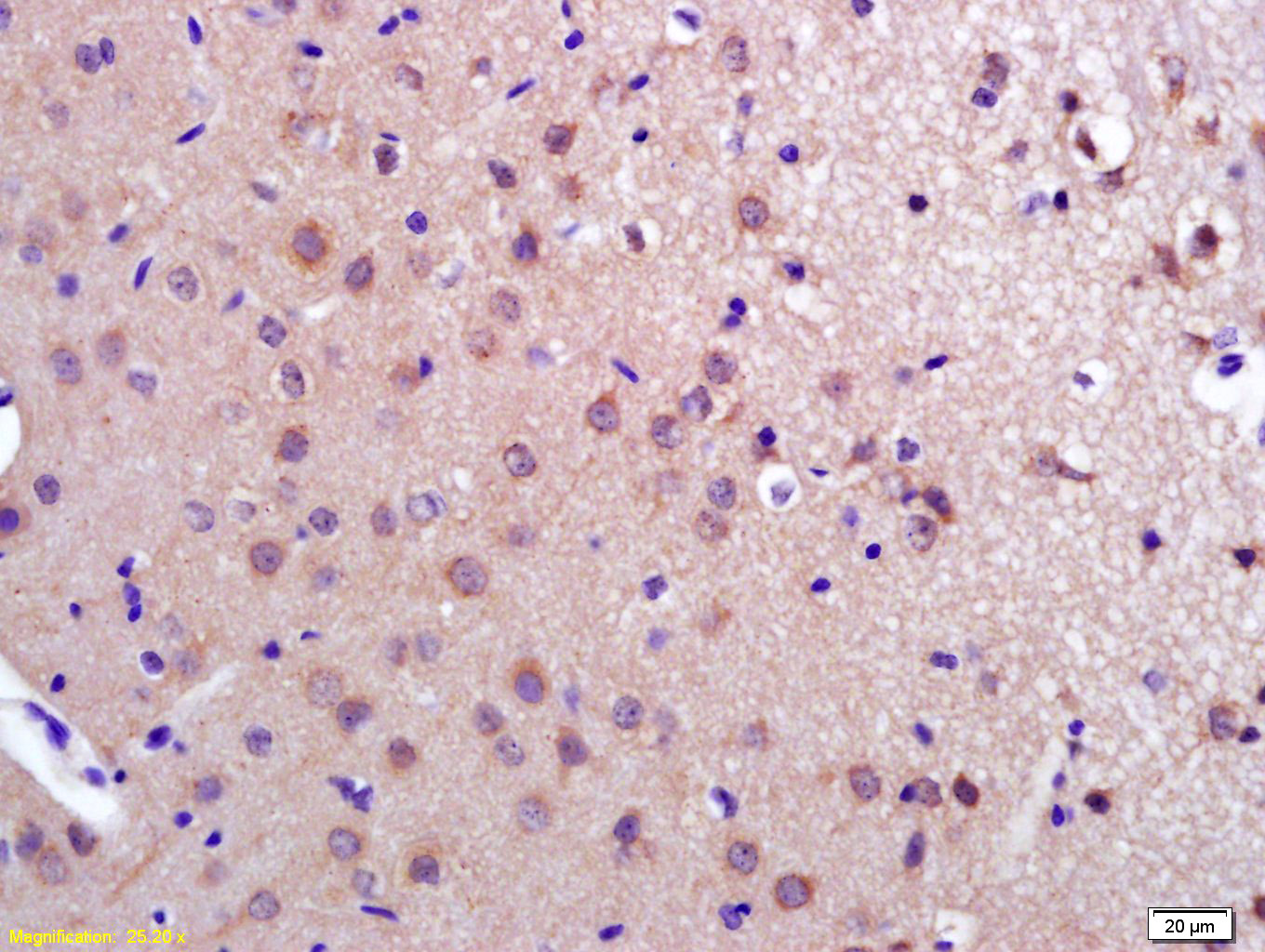
Rabbit Anti-PDCD10 antibody
Apoptosis related protein 15; CCM3; Cerebral cavernous malformations 3 protein; MGC1212; MGC24477; PDC10_HUMAN; PDCD 10; PDCD10; Programmed cell death 10; Programmed cell death protein 10; TF 1 cell apoptosis related protein 15; TF-1 cell apoptosis-relate
View History [Clear]
Details
Product Name PDCD10 Chinese Name 凋亡相关蛋白10抗体 Alias Apoptosis related protein 15; CCM3; Cerebral cavernous malformations 3 protein; MGC1212; MGC24477; PDC10_HUMAN; PDCD 10; PDCD10; Programmed cell death 10; Programmed cell death protein 10; TF 1 cell apoptosis related protein 15; TF-1 cell apoptosis-related protein 15; TFAR15. Research Area Cell biology Developmental biology Neurobiology Apoptosis Kinases and Phosphatases Immunogen Species Rabbit Clonality Polyclonal React Species Rat, (predicted: Human, Mouse, Chicken, Pig, Horse, Rabbit, ) Applications ELISA=1:5000-10000 IHC-P=1:100-500 IHC-F=1:100-500 IF=1:100-500 (Paraffin sections need antigen repair)
not yet tested in other applications.
optimal dilutions/concentrations should be determined by the end user.Theoretical molecular weight 22kDa Cellular localization cytoplasmic The cell membrane Form Liquid Concentration 1mg/ml immunogen KLH conjugated synthetic peptide derived from human PDCD10: 145-212/212 Lsotype IgG Purification affinity purified by Protein A Buffer Solution 0.01M TBS(pH7.4) with 1% BSA, 0.03% Proclin300 and 50% Glycerol. Storage Shipped at 4℃. Store at -20 °C for one year. Avoid repeated freeze/thaw cycles. Attention This product as supplied is intended for research use only, not for use in human, therapeutic or diagnostic applications. PubMed PubMed Product Detail This gene encodes an evolutionarily conserved protein associated with cell apoptosis. The protein interacts with the serine/threonine protein kinase MST4 to modulate the extracellular signal-regulated kinase (ERK) pathway. It also interacts with and is phosphoryated by serine/threonine kinase 25, and is thought to function in a signaling pathway essential for vascular developent. Mutations in this gene are one cause of cerebral cavernous malformations, which are vascular malformations that cause seizures and cerebral hemorrhages. Multiple alternatively spliced variants, encoding the same protein, have been identified. [provided by RefSeq, Jul 2008].
Function:
Promotes cell proliferation. Modulates apoptotic pathways. Increases mitogen-activated protein kinase activity and MST4 activity. Important for cell migration, and for normal structure and assembly of the Golgi complex. Important for KDR/VEGFR2 signaling. Increases the stability of KDR/VEGFR2 and prevents its breakdown. Required for normal cardiovascular development. Required for normal angiogenesis, vasculogenesis and hematopoiesis during embryonic development.
Subunit:
Homodimer. Interacts (via C-terminus) with CCM2 and PXN. Interacts (via N-terminus) with MST4, STK24 and STK25. Interacts with GOLGA2. Identified in a complex with CCM1 and CCM2. Interacts with KDR/VEGFR2. Interaction with KDR/VEGFR2 is enhanced by stimulation with VEGFA.
Subcellular Location:
Cytoplasm. Golgi apparatus membrane; Peripheral membrane protein; Cytoplasmic side. Cell membrane; Peripheral membrane protein; Cytoplasmic side. Note=Partially co-localizes with endogenous PXN at the leading edges of migrating cells.
Tissue Specificity:
Ubiquitous.
DISEASE:
Defects in PDCD10 are the cause of cerebral cavernous malformations type 3 (CCM3) [MIM:603285]. Cerebral cavernous malformations (CCMs) are congenital vascular anomalies of the central nervous system that can result in hemorrhagic stroke, seizures, recurrent headaches, and focal neurologic deficits. CCMs have an incidence of 0.1%-0.5% in the general population and usually present clinically during the 3rd to 5th decade of life. The lesions are characterized by grossly enlarged blood vessels consisting of a single layer of endothelium and without any intervening neural tissue, ranging in diameter from a few millimeters to several centimeters.
Similarity:
Belongs to the PDCD10 family.
SWISS:
Q9BUL8
Gene ID:
11235
Database links:
Product Picture
Antigen retrieval: citrate buffer ( 0.01M, pH 6.0 ), Boiling bathing for 15min; Block endogenous peroxidase by 3% Hydrogen peroxide for 30min; Blocking buffer (normal goat serum,C-0005) at 37℃ for 20 min;
Incubation: Anti-PDCD10 Polyclonal Antibody, Unconjugated(SL6847R) 1:200, overnight at 4°C, followed by conjugation to the secondary antibody(SP-0023) and DAB(C-0010) staining
Bought notes(bought amounts latest0)
No one bought this product
User Comment(Total0User Comment Num)
- No comment



 +86 571 56623320
+86 571 56623320




